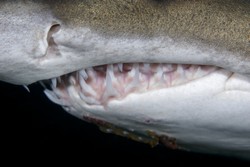Theory of evolution of jaws and teeth overturned
Recent discoveries have caused scientists to rethink the evolution of teeth and jaws. Tooth-like structures found on the gill arches of a primitive jawless vertebrate, suggest that teeth evolved prior to jaws and that the first jawed vertebrates were toothless. These findings showed that teeth and jaws did not evolve together, contradicting earlier theories. The project TOOTHJAW (Evolution of jaws and teeth - new insights into key innovations and the origin of Gnathostomes) used state-of-the-art 3D imaging techniques to analyse fossil data and learn how jawed vertebrates evolved. The two major living groups of gnathostomes are chondrichthyans (shark, rays) and osteichthyans (bony jawed vertebrates). These two fundamental lineages diverged over 400 million years ago and are not representative of early osteichthyans. Current information is based on only two members of this group, zebrafish and mice, both of which are laboratory model organisms. The question of how vertebrate jaws and teeth evolved was best answered using a multidisciplinary approach based on fossils and the earliest living examples of osteichthyans evolution. Comparisons with existing species were therefore conducted using zebrafish (Danio rerio) and Senegal bichir (Polypterus senegalus). Researchers obtained synchrotron-based X-ray tomographic microscopy models representing the embryonic and larval stages of the two species, which covered tooth development. P. senegalus is an ancient species that occupies a unique spot at the base of the actinopterygian (ray-finned fishes) clade and retains many ancestral features such as the body scales and dermatocranium (skull roof). Therefore, researchers compared 3D data from fossil specimens to teeth, body scales and dermal skull bones in P. senegalus. TOOTHJAW data were used to assess the classical theories of teeth evolution as well as dermal skeleton formation. Results showed that the development of body scales and dermatocranium were not controlled by tooth forming tissue, which contrasts with assumptions from traditional theories. These findings will ultimately contribute towards understanding our own evolution.







